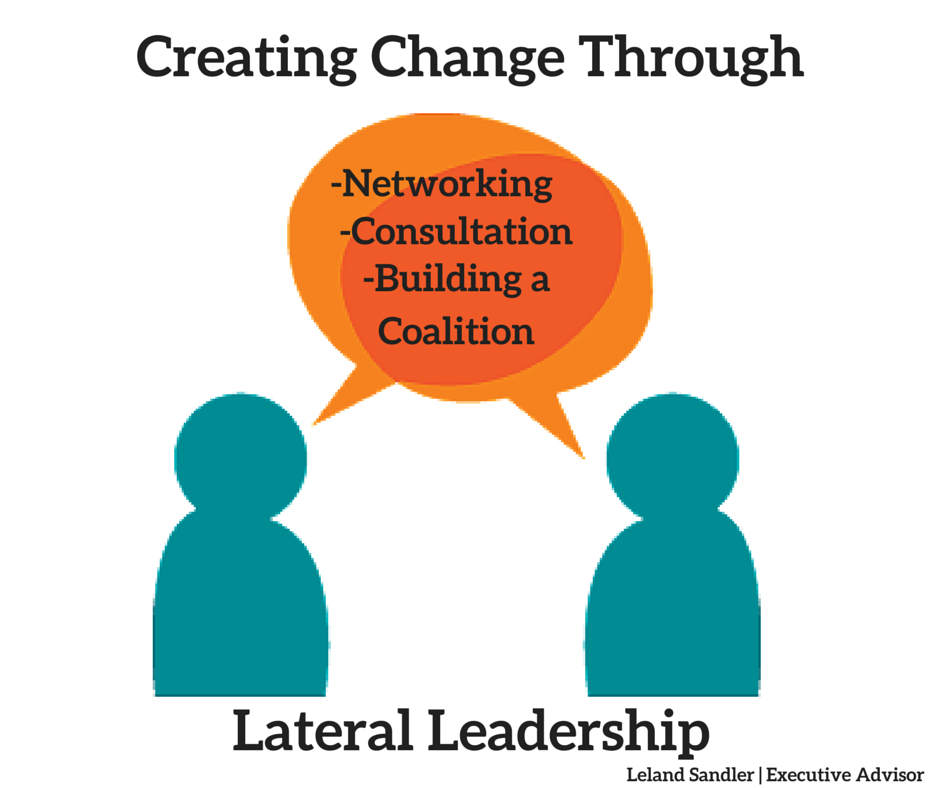by Leland Sandler | Nov 5, 2015 | Executive Advisor, Leland Sandler, The Sandler Group
As an executive advisor, I am always searching for new and innovative ways to help professionals excel in the business world by enhancing their communication and leadership skills. At the Sandler Group, we use a number of tools to help our clients master these skills and effectively interact with other professionals. One of our most valuable tools is called the Ladder of Inference.
The Ladder of Inference is a tool that demonstrates to an individual how inefficient their thinking is. When an individual takes in information, they often unknowingly observe an incomplete reality based on their preexisting assumptions and past experiences. They filter the information without thought or consideration and draw conclusions based on their interpreted facts and assumptions. In this way individuals often develop beliefs based on these assumptions and take action that may seem right, but could be disastrous.
So what happens? In today’s business world, these self-generated beliefs remain largely untested. This often leads to a loss in ability to achieve great results. A  business’ chance of succeeding drastically weakens when a group or individual has the mindset that:
business’ chance of succeeding drastically weakens when a group or individual has the mindset that:
-Their beliefs are the truth
-The truth is obvious
-Their beliefs are based on real data
-The data they select is always the real data
The Ladder of Inference is a tool that works to prevent this way of thinking by getting individuals to “catch themselves” before they go too far down their road of personal assumptions.
There are two types of skills that play a key role in helping individuals overcome these inaccurate assumptions: reflective thinking and inquiry. Reflective thinking involves slowing down the thinking process in order to become more aware of how we are reaching our conclusions and assumptions, and then sharing that thinking. Inquiry involves engaging in conversations where we can openly share views, share assumptions, and ask for more information about one another’s point of view. The goal is really understand what a person is saying and how their thinking makes sense to them.
Working with the Ladder of Inference will help professionals become better team members, communicators, and leaders. It will help businesses implement strategies that are the most effective for everyone involved. By using the ladder of inference we engage our reality most efficiently; we avoid conflict; we avoid misunderstanding, and we get great results.
by Leland Sandler | Oct 7, 2015 | Executive Advisor, Hiring, Leland Sandler
 When put simply, there are two ways to go about handling any given situation. You can choose to take action and have a say in the outcome or, you can choose to sit back and wait for the results to unfold themselves. In this way, you can either choose to be part of the cause (at cause) or part of the effect (at effect).
When put simply, there are two ways to go about handling any given situation. You can choose to take action and have a say in the outcome or, you can choose to sit back and wait for the results to unfold themselves. In this way, you can either choose to be part of the cause (at cause) or part of the effect (at effect).
In order to make a prominent stand in the business world, one must always look to be at cause. Managers and business leaders must ask questions like, “What are we going to make happen today? What do we want to create? And how are we going to do it?” They must focus on what they are going to make happen rather than what may happen to them. This demonstrates great character and leadership that other employees will look up to and follow.
Being at cause is not only important for upper level managers and executives, it is also crucial for those in the early stages of establishing a career going on interviews. Consider a situation where two people are interviewing for a job. Both individuals have the necessary credentials and are well qualified for the role. One individual takes on the interview with the point of view that the result will reflect entirely on their own performance. Whether or not they get the job depends on how they choose to present and project themselves. This individual takes full responsibility for the interview’s outcome, feeling very confident and in control.
The second individual, however, approaches the interview much differently. In their mindset, they know they will do the best they can, but the decision is ultimately based on the interviewer’s thoughts and opinions of them as well as how well the other candidates performed. This individual does not believe they have control over their own interview, making them feel less confident and less likely to succeed.
In my experience as an executive advisor, leaders at cause have a much greater chance of building a long and successful career in a field of his or her choice. Individuals that are able to take control of any given situation make a great fit for leadership positions such as managers, senior executives, and even CEOs.
by Leland Sandler | Aug 6, 2015 | Executive Advisor, Leland Sandler, The Sandler Group
 In my previous blog, I discussed several basic strategies for effectively demonstrating lateral leadership. Lateral leadership is a form of leadership where no particular title or position is required. It encourages coordination and cooperation between different groups and departments all working to achieve a common goal. You do not need to be a high level CEO or manager to be a leader. Leadership is not about waiting to be called upon to give instruction. Rather, it is about identifying the opportunities to step in and demonstrate leadership in a way that will create initiative and positive influence within the group.
In my previous blog, I discussed several basic strategies for effectively demonstrating lateral leadership. Lateral leadership is a form of leadership where no particular title or position is required. It encourages coordination and cooperation between different groups and departments all working to achieve a common goal. You do not need to be a high level CEO or manager to be a leader. Leadership is not about waiting to be called upon to give instruction. Rather, it is about identifying the opportunities to step in and demonstrate leadership in a way that will create initiative and positive influence within the group.
Honing the skills to become an effective leader takes time and patience. However, the payoff is certainly worth it. By mastering the following strategies for lateral leadership, you will soon find doors to success swinging open with endless opportunities to create valuable change for your organization.
Networking
Establishing a broad network of relationships with people both inside and outside your company and field of expertise is an essential part of becoming a lateral leader. Through networking, you will find people who are willing to offer you support and people who can provide you with connections to even bigger networks, expanding your overall capacity for success.
Consultation
Take the time to meet with your team and the people you are working with. Ask about their ideas and opinions on how to achieve the task at hand while sharing your own thoughts and ideas as well. Reacting to one another’s ideas and bouncing different ideas of each other will help you learn how the goals of the group will be completed most effectively for everyone involved. There is always more than one way to go about completing a task. Some managers will stick strictly to their own strategies that have worked in the past. However, every individual is unique and works in a different way. Instead of forcing your way on others, try engaging in more productive consultation.
Building a Coalition
Simply put, there is strength in numbers. Gathering a group of influential people together around a common goal will create a higher sense of authority and lead to higher levels of support. Building a coalition of supporters and individuals who believe in the same goal plays a vital role in lateral leadership. Instead of standing alone, find others who are going to be affected by the change you are proposing and get them on the same page. Once everybody understands and supports the big picture, each individual will take on their necessary role to lead the organization into the great and inevitable change that is sure to follow.
by Leland Sandler | Jul 29, 2015 | Executive Advisor, Leland Sandler, The Sandler Group

Demonstrating leadership does not require a specific title or rank in an organization. Whether you are a CEO, assistant manager, intern, replacement hire, new hire, or even a recent college graduate looking for a first job, it is important to be able and willing to take on a leadership role at any given point in time throughout your career. In today’s complex business world, management positions are not always clear cut. Employees may work as a team on an equal playing field or work under multiple supervisors at a time. At one point or another in your career, you may find yourself having to lead a group of people who you have no formal authority over. When this is the case, there are several techniques and principles that will lead you on the road to success. Throughout my many years as an executive advisor with the Sandler Group, I have found the following principles to be the most effective:
-
Enthusiasm
Positivity, hard work, and enthusiasm are contagious. Individuals who show genuine passion and appreciation for their work often deliver great results and motivate others to do the same. People are naturally drawn to leaders with a clear vision and high level of enthusiasm. Even when you are not directly in charge, you can always offer leadership by raising the overall energy of a group, and motivating them around one common goal. Often, pure emotion and leading by example are more effective strategies than giving orders and directives.
-
Maintain Your Ego
In order to demonstrate leadership effectively, one must do so without acting arrogant or looking for approval. When an egocentric individual does have authority over a group, the group will often complete the required tasks, but may do so begrudgingly and without optimal effort. As this is the case, an egocentric individual giving instruction to a group without formal authority will not be taken seriously. When employees don’t respect their leaders and are left uninspired, their work ethic becomes less efficient, causing their business to slowly decline. Be open to others. Recognize that you are not the one who needs to have all the answers; rather you are the one to help bring about the best answers from the group.
-
Be Invested- Ask Questions
An effective informal leader does not stand around keeping watch over other individuals. Rather, the informal leader plays an active role in the group’s efforts by being authentically inquisitive and asking questions. The ultimate goal of any leader is to ensure a certain outcome is achieved effectively by a group of individuals. How that leader goes about his efforts determines how successful the outcome will be. Being engaged in a project as a leader will have a positive influence on the others in the group, showing them you are just as invested in the project as they are. Demonstrating inspiring and authentic leadership skills will make a big difference in the success of your business as well as the success of your career.
by Leland Sandler | Jul 1, 2015 | Leland Sandler, Military, Military Officers, The Sandler Group, Veterans

Looking to build your leadership team?
Hiring a veteran military officer brings your company a foundation of skills and competencies that you’re unlikely to find almost anywhere else in the private sector. These individuals are disciplined, have an exceptional work ethic and success orientation – characteristics key to the leadership of any business.
I had the incredible opportunity to work with the military through the San Diego Chamber of Commerce Military Advisory Committee. I and other San Diego-area business leaders gladly gave our time to these men and women who are making such a huge difference for our country. In my case, I used my expertise as an executive advisor to provide career development advice to officers who were about to come out of the military. Starting with basic questions such as what was important to them and what they thought they might want to do as a civilian, we determined, based on their skill set (especially leadership skills) what industry and what role might be a good fit. Through the members San Diego Chamber of Commerce we placed these officers into private sector jobs, greatly easing their transition from military to civilian life.
As an executive advisor I immediately saw the leadership skills possessed by military officers. What was interesting is that those skills were not as immediately apparent to many of them, as they often misjudged how readily applicable their military leadership experience was to the private sector. It’s true that one of the challenges some military officers face when they get out into the private sector is their hierarchical orientation. This is a key part of the military’s organizational structure. Yet, in today’s business world, we’re looking for flatter and flatter organizations. We’re looking to drive decision down throughout the organization, to broadly empower. In my advisory sessions with these officers I was able to explore with them key ways private sector leadership differed from military leadership, along with strategies for most effectively channeling their leadership abilities. While just about any career shift involves adjustments and adaptation, the skills and experience veterans obtained in the military form a solid foundation for senior leadership in business.
 business’ chance of succeeding drastically weakens when a group or individual has the mindset that:
business’ chance of succeeding drastically weakens when a group or individual has the mindset that:




Follow Me